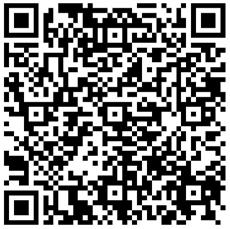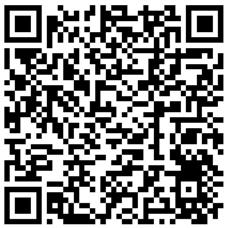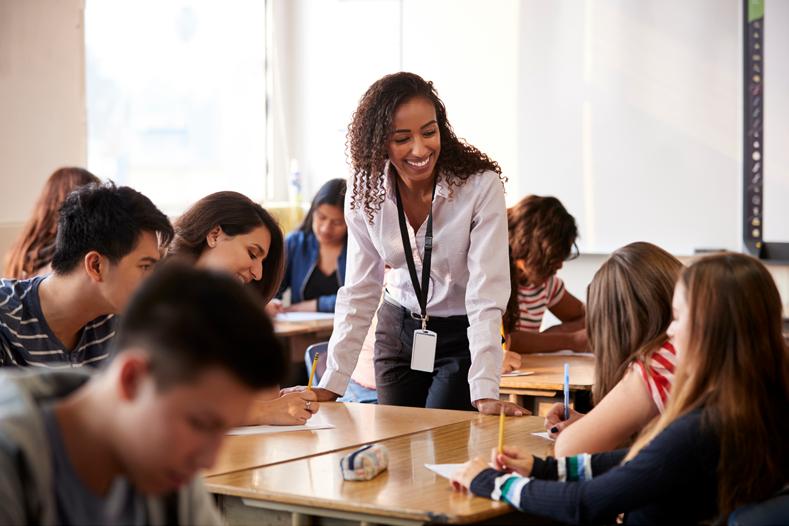
4 minute read
Digging Into the TLE TOOLBOX Nailing down the nuts and bolts of effective classroom management
By Cathey Bugg and Sarah Yauk
Who comes to school with empty toolboxes? New, alternatively certified, and emergency-certified teachers! Because Teacher and Leader Effectiveness (TLE) focuses on building teacher practices, principals can use the TLE Tulsa Model rubric to help teachers gather tools. New teachers often struggle managing student behaviors. In the rubric, column 3 describes what effective teachers do to plan and manage classrooms. Principals can add the how. (Note: Two TLE models, the Tulsa Model rubric referenced throughout the article and the Marzano Model, have been used in Oklahoma. The practices discussed in this article can support either rubric.)
Sometimes teachers think a sledgehammer approach will force students to behave. Hammers don’t establish well-managed classrooms; instead, it’s best to try a great set of plans. Planning helps new teachers proactively promote behaviors that increase learning and decrease behaviors that obstruct it.
According to the rubric, teachers in well-managed classrooms use four strategies: 1. positive expectations, 2. well-practiced classroom procedures, 3. monitoring and coaching, and 4. positive relationships with students.
1ESTABLISHES, COMMUNICATES, AND CONSISTENTLY IMPLEMENTS APPROPRIATE STANDARDS OF CONDUCT.
The first tool teachers need for establishing an orderly learning environment is expectations, stated in positive phrases. These expectations define how everyone— students and teachers—will behave and treat each other. Sometimes expectations are school-wide, such as a creed; other times they are developed by grade levels or single classrooms. One expectation could be, “We will value and respect each another.” Principal Jenny Affentranger expects Bethel Early Elementary to “Bee the change you want to see.” Marsha Drees’ Edmond students make this commitment: “I am positive and prepared to give my best effort in today’s Media Center activities. Readers are Leaders.”
Teachers should teach students what expectations mean, just like they teach subject content, then start class every day by reciting them. Recitation helps students learn to apply and internalize expectations. Finally, teachers should model and enforce the expectations consistently. “You have got to be consistent—day by day, moment by moment. It makes students feel secure and know what to expect,” says Linda Davis, a teacher at Buffalo Public Schools.
Students
STUDENTS.
Strategy number two is classroom procedures. Why are procedures important? They specify exactly how tasks are done without chaos, confusion, or loss of valuable instructional time. Classrooms need procedures for everything from entering the door to sharpening pencils. (Scan the QR code at left to see a list of procedures teachers can develop.)


T-charts are great tools for teaching procedures. They detail the procedure, what it looks like, and what it sounds like. Teachers should model the procedures exactly as they want them performed, then practice procedures over and over and give feedback until they become routine and students need few reminders. Finally, teachers should ask students to evaluate their own efforts against the procedure steps. Where did they do well? Where do they need to improve?
3
MONITOR THE BEHAVIOR OF STUDENTS DURING WHOLE-CLASS, SMALL GROUP, AND SEAT WORK ACTIVITIES AND DURING TRANSITIONS BETWEEN INSTRUCTIONAL ACTIVITIES.
You get what you expect only if you inspect. Unmonitored expectations and procedures will erode and extinguish. Principals can work with teachers to monitor students throughout the entire school year.
Buffalo Schools Superintendent Dale Spradlin tells teachers he taught from his feet, not his seat. Encourage teachers to move to different areas of the classroom when instructing, circulating, and conversing with small groups to clarify instructions, ask questions, inspect student work, and offer encouragement. Teachers can direct transitions with explicit instructions to ensure student safety and focus. Principals should guide teachers to ask these questions continuously: Are all students on task? Are all students correctly following the applicable procedure? Using simple checklists, teachers can self-evaluate management, and principals can give them valuable customized feedback. (Scan the QR code at left for a sample checklist chart.)
TLE for You and Me
These two resources provide valuable information for creating effective teachers and classrooms.
Great Expectations www.greatexpectations.org
“The First Days of School: How to Be an Effective Teacher,” 5th edition, by Harry K. Wong and Rosemary T. Wong
An elementary and middle school administrator for more than 25 years, Cathey Bugg opened Heritage Elementary in Edmond in 2015. The school earned Great Expectations Model School status in its first year, only the second school in the country to do so. Bugg was the OAESP 2019 Principal of the Year and a National Distinguished Principal. She is retired, trains administrators in TLE practices, cheers for the Sooners, and loves spending time with her three young grandsons.


4 AS NECESSARY AND APPROPRIATE, STOPS MISBEHAVIOR PROMPTLY AND
WITH A VOICE LEVEL/WORD CHOICE SUITABLE TO THE SITUATION.
Effective teachers promote good behavior by building positive student relationships. Buffalo Middle School teacher Kathleen Buckhaults greets each student with a handshake or fist bump. Edmond Heritage Elementary teacher Mendy Shepard connects with student interests. Teachers whose expectations and procedures are clearly stated and practiced rarely see misbehavior. These teachers demand respect from students, and it is reciprocated.
Teachers should remember that negative reinforcement only temporarily suppresses a behavior. When teachers have to respond to misbehavior, they should do so privately, avoiding sarcasm or public humiliation and using a quiet, unemotional tone of voice, stressing how compliance will benefit the student. Conversely, positive reinforcement increases the probability that students will repeat behaviors. Targeting the reinforcement (Saying, for example, “I like the way you stayed on task” instead of “Good job today”) lets students know exactly what behavior was correct. Praising individuals, small groups, and the whole class significantly improves student behavior.
By coaching new teachers to implement expectations, create procedures, practice routines, and build positive relationships, principals can use the TLE rubric to equip teachers to manage their classrooms effectively. This creates a classroom environment where students feel safe and are engaged and able to focus on learning. ■
Sarah Yauk hails from Buffalo in rural northwest Oklahoma. She began as a home economics teacher, then elementary counselor, Principal (PreK-12), Regional Accreditation Officer, Barlow consultant, TLE trainer, and now is the part-time high school guidance counselor in Buffalo. Yauk and her husband Paul farm and ranch, and in their spare time, they enjoy Oklahoma State University football and their four grandchildren in growing families. She is also very active in the community and local church.












